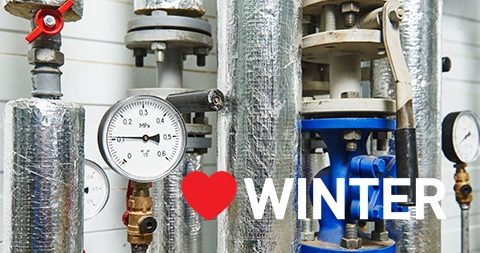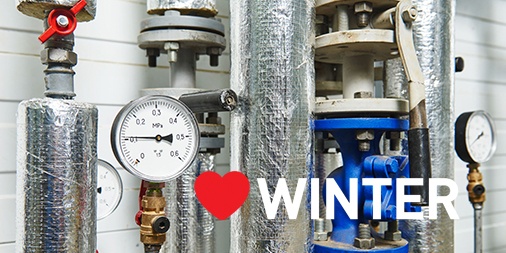As most can imagine, the winter brings a dangerous risk to operations and processes for industrial equipment. Sure, the snow, ice and freezing temperatures are large contributors to this problem but what other elements beyond the basic winter conditions influence heat loss?
Aspects such as the difference in fluid and ambient temperature, the diameter of the pipe, type of insulation material and its thickness, as well as pipe location are things to keep an eye on – especially when temperatures drop. Here’s how each of them can influence heat loss:
- The difference in temperature: Since heat loss is linear with the difference between fluid and ambient temperature (Tfluid – Tambient), there is a greater risk for dangerous results if the two grow farther apart.
- Pipe diameter: Heat loss is approximately linear with pipe size. The bigger the pipe, the greater the risk of dramatic heat loss.
- Type of insulation material: Heat loss is linear with insulation k-factor. With the k-factor being temperature dependent, a lower k-factor is better.
- Insulation thickness: A certain amount of insulation is always required. The higher the pipe temperature, the more insulation is needed in order to keep the cladding at a reasonable temperature.
- Pipe location: Depending on if a pipe is indoors or outdoors, the environment it is located in can have great effects on performance. Great wind speed and temperature drops can cause significant heat loss, especially with insufficient insulation.
One of the main ways to prevent these issues is by implementing Electric Heat Tracing technology. Electric Heat Tracing provides heat to maintain the temperature of fluids by replacing the heat lost through thermal insulation. Electric Heat Tracing addresses the issues listed above by utilizing its capabilities in applications such as freeze protection, process temperature maintenance and process heating.
Electric Heat Tracing provides freeze protection by maintaining temperatures above 0°C and helps melt both snow and ice. To improve process temperature maintenance, Electric Heat Tracing systems can keep temperatures at a specified level and control viscosity for flow assurance while avoiding condensation problems. By implementing heat tracing technology, equipment can benefit from process heating to help in operations for enhanced oil recovery during crude oil exploration, for example.
Learn more about solutions that can defend against winter heat loss on www.nventthermal.com.


